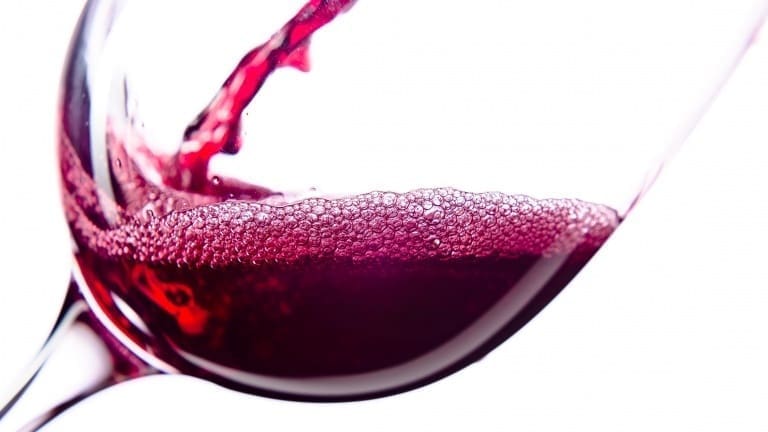Merlot Wine Guide

Merlot is a great wine, but it is also one of the most criticized and misunderstood wines by both critics and customers. The first adjectives that come to mind to describe Merlot is soft, warm, plump, velvety…
This monothematic profile doesn’t give praise to a globetrotter grape that has traveled all over the world and has adapted to all climates due to its early maturity, not to mention that in many cases it has helped winemakers make soft wine that otherwise would have been excessively rough.
But we are analyzing the problem from the wrong point of view: very often, the velvety nature of Merlot was pushed to the extreme and has become its Achilles heel, and today we are inundated with anonymous Merlot, veiled by a softness that hides a potential rarely exploited. To better understand this noble grape, we have to leave for France.
The home of Merlot: Pomerol

Pomerol is an extremely fragmented denomination; the entire area measures 12 square kilometers and sees the presence of 151 vignerons. It is a very diverse territory enclosed between the Dordogne and its tributary, the Isle; the geological origin dates back to the late Quaternary, and it was formed by alluvial deposits from the Massif Central. The soil is made above all of clay, combined with dark stones and sands. In different forms and with many shades of yellow, the clay is present throughout the area, often deeply enriched by iron oxide.
Petrus, a matter of terroir
The top of Petrus Hill has the highest concentration of iron oxide in the area, with very dark tones, almost black; sloping almost imperceptibly, a light and very compact gravel (gravel) emerges, or it becomes sandier with a constant presence of stones.
Merlot: a global grape variety?
We can go on now that we have wiped out the main commonplaces about Merlot and its innate characteristics of roundness and softness: not every Merlot is a puffy, super fruity bomb dripping jam from every pore.
The perceived identity of Merlot is quite different from the real one: this grape variety, undoubtedly unique in its native habitat, has become the protagonist of a global homogenization in all corners of the planet, only to be criticized for what is actually the main characteristic of the grape: the ability to easily adapt to different climates and territories in which it was introduced.
Merlot is very precocious and needs a rich soil that holds the water for a long time to avoid sudden maturation with excessive concentrations. Furthermore, during hot periods, the plant tends to compact itself, severing the younger roots and balancing the plant’s risk of overnutrition. There are bilateral and single Guyot in Pomerol, but not only there, depending on the age of the vineyards and soil characteristics, to allow for higher quality productions.
Fermentation takes place mostly in steel tanks, but there is a renaissance in the use of vitrified concrete also for alcoholic fermentation, which could save energy and avoid the risk of reduction. Maturation takes place in the classic oak barrels, with the assembly of different particles made as soon as possible and a standard aging period of 18 months.
The most that can be expected from Pomerol is 49 hl/ha, and the average is about 40 hl/ha.
Risks in the area: it is located in the far north, around the 45th parallel, so achieving optimum maturation is not so obvious.
Merlot in Italy
We talked a lot about France and Pomerol, but that was a due homage, since France is the homeland of this amazing grape. However, even in Italy, Merlot has successfully taken root in many areas.
Merlot thrives in Friuli Venezia Giulia, particularly in the eastern hills (Colli Orientali del Friuli), thanks to a cool climate and dark clay in the soil: wines with an elegant profile, vivacity and freshness, structure, but never too chubby.
Another area to consider is Tuscany, where Merlot dominates all along the Tyrrhenian area, especially in the soils rich in clay of Val di Cornia and Bolgheri, but do not miss the opportunity to try the bottles produced around Cortona, where a specific Cortona DOC was created.
What does Merlot wine taste like?
The wines that are obtained from Merlot are velvety and intense, with a beautiful dark ruby color that, with age, tends to become garnet along the edge.
The bouquet offers a full fruit profile: mellow, with blueberries, violets, blackcurrant, plums, cherries, tomato leaves, fennel, rhubarb, and classical notes of humus. Herbs, mint, thyme, oregano, and balsamic notes are frequently detected in pine shadows. The main characteristic that makes it recognizable is a herbaceous rhythm in the background that permeates all the wine and blends beautifully with the warmth of the fruit.
On the palate, it is broad and deep, juicy and dripping with blackberries and cherries. In the mouth, the tannins are full-bodied, velvety, but the herbaceous and earthy flavors create a layered structure interspersed with a pleasant crunchiness you won’t forget so easily.
Merlot serving temperature

Suggested food pairings
Merlot is tannica and lushious wine, rich in alcol, estract and deepness, so do not hesitate to pair it to rich, beefy dishes like lamb kebabs, gnocchi with Bolognese, hamburgers, baked lasagna, truffle risotto, pasta Amatriciana.
